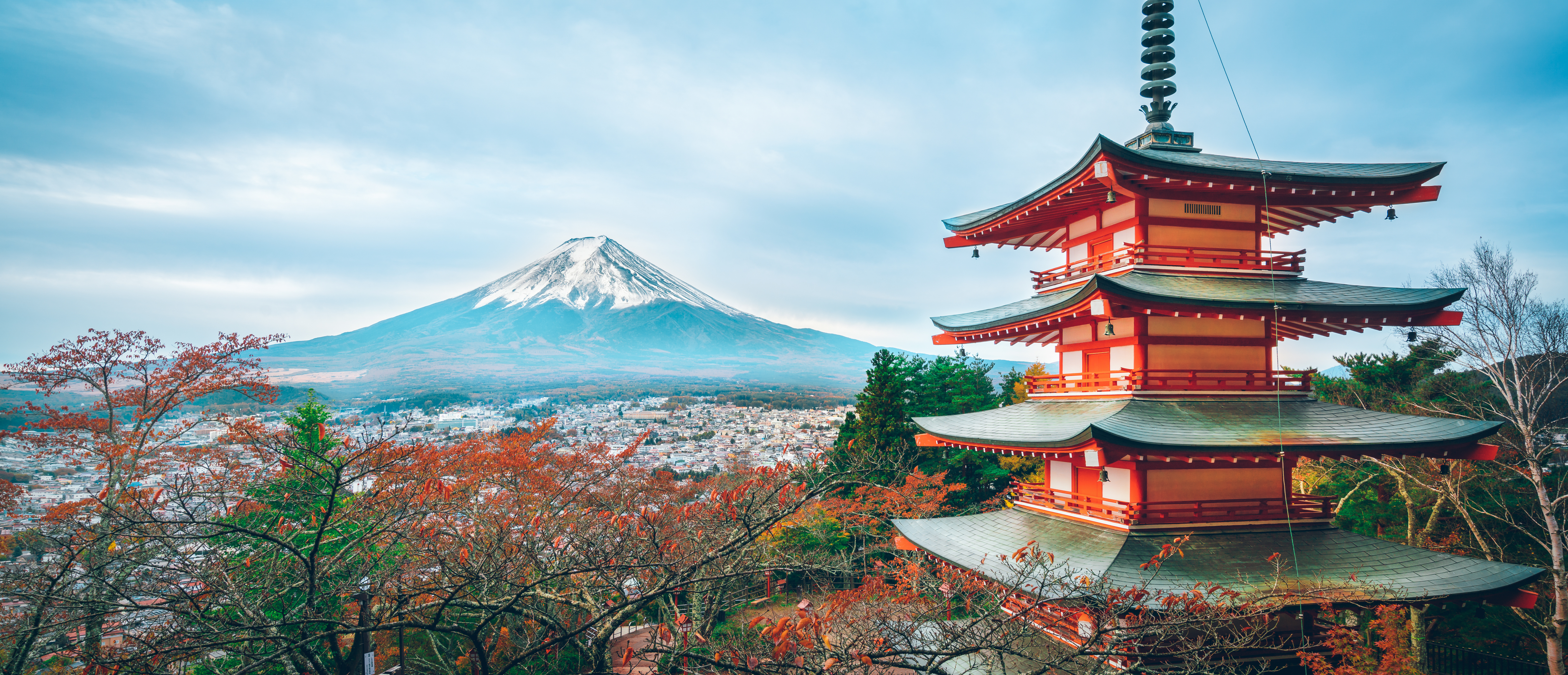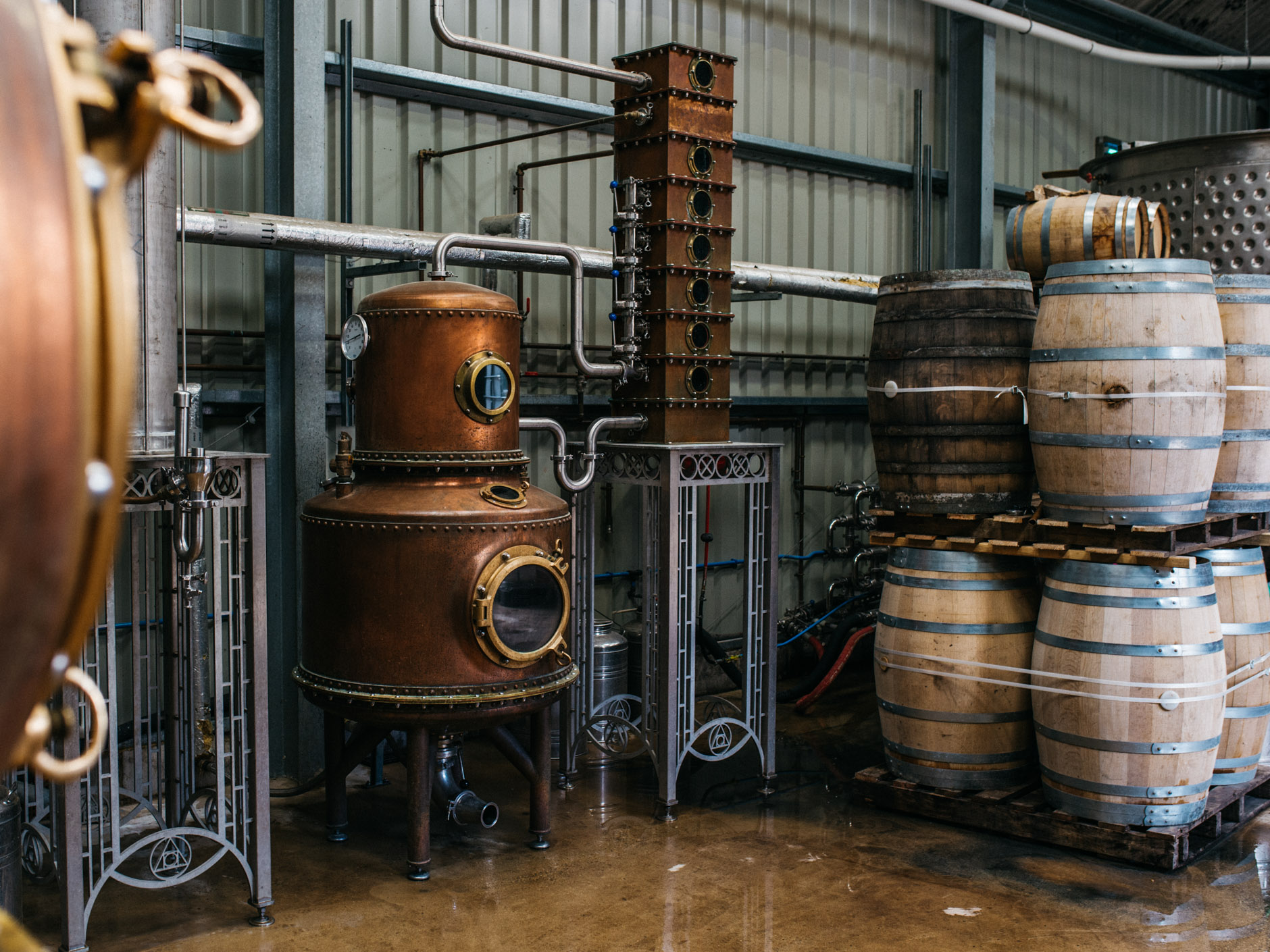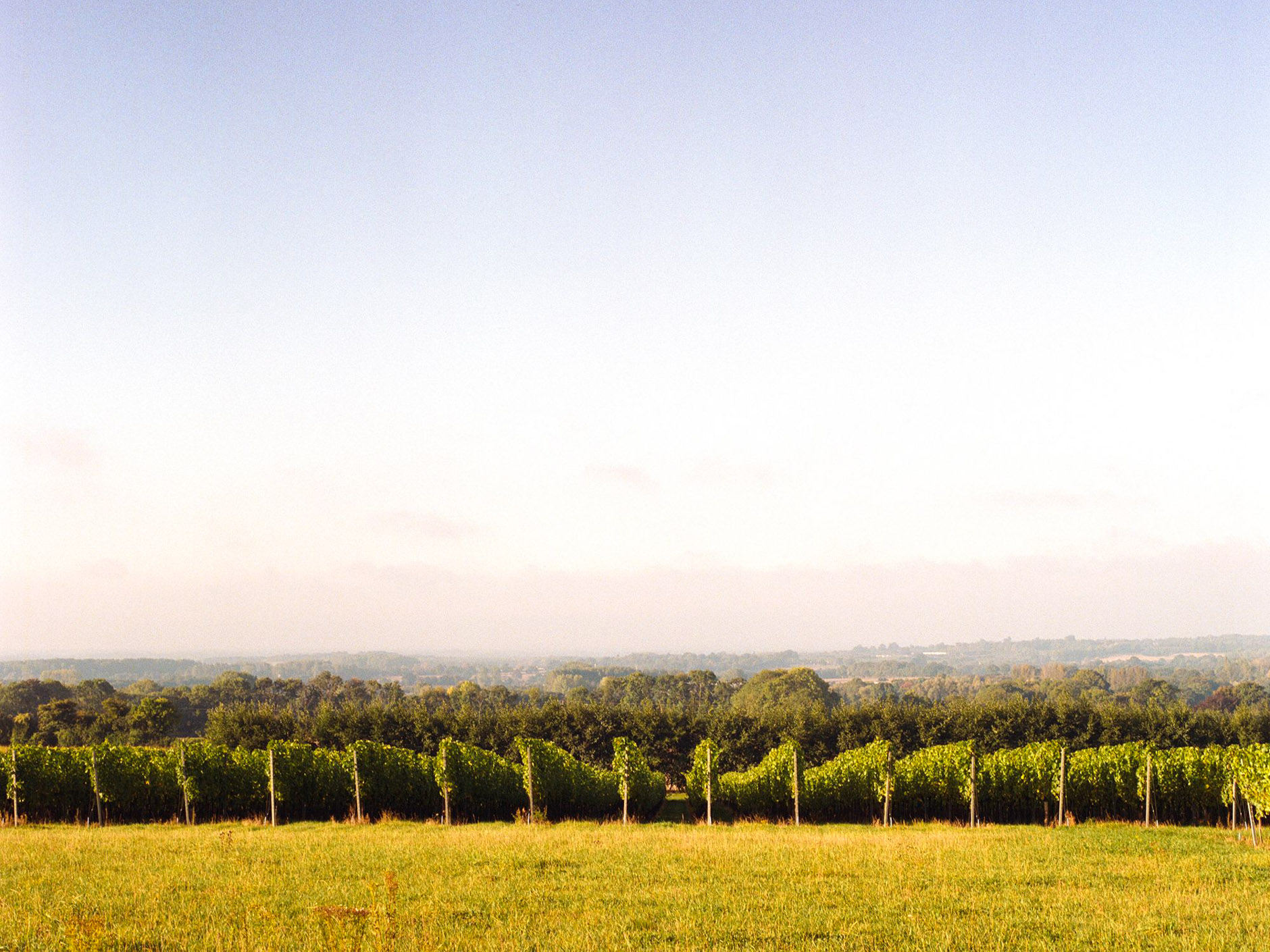There are many Tokyos. One is the infinitely-sprawling metropolis with its neon lights and building-side advertisements like the backdrop to Blade Runner. There is also the ultimate shopping destination, from the world famous Shibuya pedestrian crossing to the main street of Ginza – a valley carved into the steel and concrete by a river of tourists, bound by department stores each bigger and better than Selfridges. I could go on forever. However, nestling within one of the great cities of the global economic system are bits of rural and industrial Japan that managed to slip in unnoticed, bringing its culture, history and traditions in big tarpaulin duffel bags; refugees from the past.
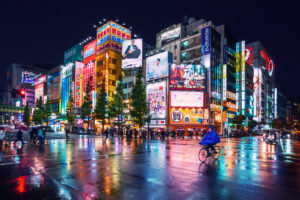
Tokyo by night
A large swathe of central Tokyo is made up of tiny one- or two-storey houses in districts only accessible by single-lane roads that do not appear on Google Maps. Away from the overcrowded boulevards of Tourist Tokyo or the glittering skyscrapers of Business Tokyo are self-contained neighbourhoods, each with their own unique collection of family-owned shops and cafes. This is the heart of Japan, and it does not like change. As the neon-sided buildings close in around them, the true arbiters of Japanese culture meditate in quiet resistance. Having invented the oyster card and pioneered mobile payments, a majority of transactions in the country are completed in cash. One does not even need to be employed in organised crime to buy a new Lexus with a suitcase of crisp 10000-yen notes. The shop assistant would probably not even bat an eyelid.
Barring the magical toilet seats that shoot jets of warm water at your posterior, the older generation of Japanese, of which there are now a lot, tend to have deep-seated suspicions towards all things new, fresh, and exciting. And they are a peculiar bunch indeed, as they are the hardest-working people in the world. The best inventions are born out of humanity’s innate desire to slack off. The telephone worked because nobody wanted to sit at a desk and press a button in Morse code. The car was a success as no one liked to clean horse excrement off the streets or take a bus. But instead of using technology to make their lives easier, they somehow live their lives in spite of technology, clinging on to traditional craft techniques and practices by obsessively transforming them into specialised skills. Babies, if born at all in a country with the world’s lowest birth rates, are probably born in anoraks instead of towels, such that obsessive compulsiveness permeates every nook and cranny of Japanese life.
In the quest for the perfect sushi, chefs train for decades under exacting and hard-nosed masters each with their own vision of the ideal
Literally everything is an art form in Japan. There is the art of recreating samurai swords from the Tokugawa shogunate using only a hammer, the art of hand-shaving sheets of wood only microns thick, or the art of arranging flowers to form part of a shrine. Then of course, there is the art of sushi. Originally, sushi was preserved fish pressed onto vinegar-seasoned rice from a time when the most advanced form of transport was the horse-cart. By the time the war ended, sushi had evolved to become the artisanal parade of fish on rice that we know today, when Jiro Ono codified the order in which the fish was served. Since then, sushi became just another outlet in the Japanese quest for perfection.
Unfortunately, sushi is also food, and food is always subjective. In the quest for the perfect sushi, chefs train for decades under exacting and hard-nosed masters each with their own vision of the ideal. Unsurprisingly, just like change in other aspects of Japanese life, divergence from the established form is frowned upon, and that means choosing between top tier sushi restaurants is very much like choosing which arse-jet magic toilet is best; the diner, like the toilet, will find it hard to stray very far from the mark. And so it has been for many years. Japanese executives visit sushi bars for the same reasons American executives frequent steakhouses. They are expensive, are an easy way to impress a customer on a night out, and they treat regulars well. Becoming a regular at a sushi restaurant is as simple as getting onto that top-level scientology boat; one just pays enough money to get on board. Once you have gained entry, no one can cast doubt on your claims to have tasted the nectar of the gods.
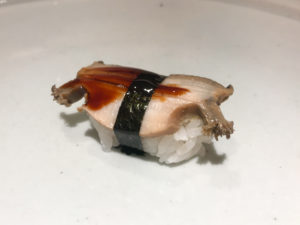
Sushi
Miyaba, an intimate 10-seat sushi bar in the Hamamatsucho business district, was a favourite of the Toshiba executives who worked in the electronics giant’s head office just a few blocks away. Mr Toyama, a former Toshiba salaryman who retired to work as a condominium concierge, was surprised that I had even heard of the place. He told me the founder Mr Miyaba worked in the Emperor’s favourite sushi restaurant in Kyobashi before opening his own sushi restaurant in the sixties, the decade of economic boom times that saw the first Tokyo Olympics and the opening of the Shinkansen, the world’s first high speed rail line. His sushi rice was lightly vinegared, the fish subtly aged to perfection. Even after Mr Miyaba had passed on, regulars still judiciously document each piece of fish while reminiscing the ‘good old days’ on Tabelog, the Japanese domestic equivalent to Yelp.
When I first started visiting Miyaba in 2015, the old master was still there, casually chatting with a middle-aged couple who always got the best seats in the house, in the corner where they could see the chefs prepare everything. Meanwhile, a younger man, hair shaved bald like a conscript, served me and spoke in passable English. That was the first time I met Mr Sakamoto. He apprenticed at a neighbourhood sushi restaurant serving the elderly residents of the Tokyo suburbs, before moving to Sydney at a time before cheap and cheerful conveyor belt sushi and microwavable bento boxes invaded metropolitan dining tables. As a punishment for having seen the world and being able to speak the language of Johnny Foreigner, Sakamoto served all the tourists.
A few years later, having taken over the restaurant as its head chef, Sakamoto began to reveal some of the restaurant’s secrets, occasionally tweaking the standard menu with rare fish and even stewed clams. This may seem insignificant to the uninitiated, but it was the sushi restaurant equivalent of hiking one’s skirt up. In the 2018 typhoon season, when I was often the only customer during lunchtime, we would chat while he served up increasingly eclectic dishes such as sea urchin from Kobe that somehow tasted of passionfruit. Over these private lunches, he did something usual for a Japanese person. He complained. The microwaved bento boxes he ate for lunch were derivative, the fish at Tsukiji market was getting more expensive, his protégés made more money than him. So we went off to grab a burger.
The once-solemn apprentice was showing the strains as he bore the weight of being a master of someone else’s house. Nobody told Sakamoto he could not do whatever he wanted, it was just a perfectly Japanese expectation that he had to keep everything exactly the same. The traditionalists’ yoke looms ever present over anything, whether it was a debate about allowing princesses to inherit the throne, or if tuna could be served after conger eel. The day I left Tokyo for New York, Sakamoto showed me the shrine memorialising Mr Miyaba in what used to be the upstairs private dining room. “I am the master now”, he said, as he forced through a grin. A year later, he told me he was opening his own restaurant.
Traditionalists will respect Sakamoto’s techniques and skills, while adventurous diners will celebrate his innovative menu. They are all wrong, and he is not any of them. He is a man who only really wanted to be himself
Sakamoto’s new six-seater restaurant stands in the shadow of the new Kengo Kuma-designed Olympic Stadium. It is situated at the corner of an equally brand new building, which he shares with a few other restaurants including an outpost of the famous Savoy pizzeria from Azabu. He works the restaurant alone, no disciple and no elderly waitress to assist him. The lady who serves the tea actually works at the izakaya next door. “Long time no see, eh”, he beamed as I walked in. A middle-aged couple, who I recognised as regulars from the old shop, were just on their way out.
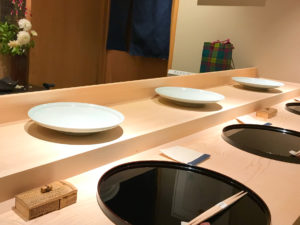
Sakamoto’s new restaurant
Free from the shackles of the Establishment, Sakamoto had personally designed everything from the ground up, including the interior. While the aesthetic was still recognisably sushi restaurant-esque, with its hinoki wood and mother-of-pearl tiles, he tried to shake things up with an entryway paved with large flat river stones, and western art on the walls. The only thing bothering Sakamoto was the traditional flower arrangement. The petals kept falling too quickly. At the back of the sushi bar, there was a small grill where he could cook his favourite dish, the very un-traditional freshwater eel. All the rare and interesting dishes he used to serve on the side and after the main sequence are now part of the showcase. The standout course was raw abalone, sliced and marinated in a dark, mysterious, alcoholic concoction. Ironically, this was a dish so traditional that everyone else no longer serves it.
At the new Sushi Sakamoto, the chef was finally in his own element and the people love it. Dinner is now usually fully booked. The serving plates may be posher, the sake list longer, the trinkets shinier, but it hardly matters. Usually, this makes for an exquisite but thoroughly dull experience, as new restaurants are often bereft of the imperfections that give a space its character. There were no cracks in the paintwork, no condensation stains on the fridges, but it was one of the rare places that just oozed personality. Sakamoto’s personality. As the Olympic games loom, each of the many Tokyos could claim Sakamoto for their own. Business Tokyo would say that he has created a place for businessmen to bring their clients, and Tourist Tokyo would argue that it is in the perfect location to expose Olympic visitors to the world of fine sushi. Traditionalists will respect Sakamoto’s techniques and skills, while adventurous diners will celebrate his innovative menu. They are all wrong, and he is not any of them. He is a man who only really wanted to be himself.
Photographs by J Khou except the images of Tokyo by night and Mount Fuji which have been licensed by Adobe.

